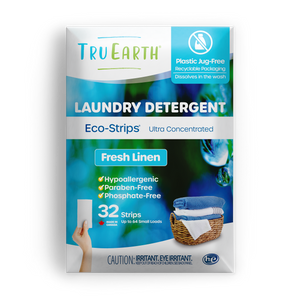Color bleeding can be a frustrating issue when doing laundry, as it can result in faded or stained garments. Fortunately, there are effective measures you can take to prevent color bleeding and preserve the vibrancy of your clothes.
In this comprehensive guide, we will explore the use of vinegar as a natural solution to prevent color bleeding. Discover the science behind vinegar's effectiveness, practical tips, and step-by-step instructions to safeguard your garments and maintain their original colors.

The Ins and Outs Of Color Bleeding
Color bleeding occurs when dyes from one fabric transfer onto another during the washing process. This can happen due to various factors, such as the fabric's dye quality, water temperature, agitation, or improper sorting.
Understanding the causes of color bleeding is crucial in implementing preventive measures. By taking proactive steps, you can ensure that your clothes stay vibrant and free from unsightly color stains.
The Role of Vinegar in Preventing Color Bleeding
Vinegar, a pantry staple with acidic properties, can be a game-changer in preventing color bleeding. The acetic acid in vinegar helps to seal the dye in fabrics, preventing it from bleeding onto other garments.
Additionally, vinegar can act as a natural fabric softener, reducing friction and minimizing color transfer during the wash cycle. By incorporating vinegar into your laundry routine, you can maintain the integrity of your clothes and prevent unwanted color bleeding.
Choosing the Right Type of Vinegar
When using vinegar to prevent color bleeding, it's important to choose the right type. Distilled white vinegar is a popular choice due to its neutral color and mild scent. Alternatively, apple cider vinegar can be used, but be aware that it may impart a slight apple fragrance to your clothes. Whichever type you choose, ensure that it is free from additives or artificial colors that could potentially cause staining or damage to your garments.
Preparing Your Laundry for Colorfastness
Proper preparation of your laundry is key to preventing color bleeding. Start by sorting your clothes based on color, separating darks, lights, and whites. This helps to minimize the risk of dyes transferring between garments.
For new or vibrant-colored items, consider washing them separately for the first few washes to prevent color bleeding onto other clothes. Additionally, check the care labels of your garments for specific instructions regarding water temperature and recommended washing methods.
Using Vinegar in the Washing Process
Vinegar, a staple ingredient found in most kitchens, can also be a powerful ally in your laundry routine. With its natural cleaning and deodorizing properties, vinegar offers a safe and effective alternative to conventional laundry products. To prevent color bleeding, you can incorporate vinegar into the washing process.
Here's a step-by-step guide:
- Sort your laundry: Separate your clothes based on color as mentioned earlier.
- Add vinegar to the wash cycle: Depending on the size of your load, add half a cup to one cup of vinegar to the final rinse cycle. The vinegar will help set the colors and minimize color bleeding.
- Use the appropriate water temperature: Follow the garment care labels to determine the recommended water temperature for your clothes. Hot water can increase the risk of color bleeding, so opt for cooler water whenever possible.
- Gentle washing: Choose a gentle or delicate cycle on your washing machine to reduce agitation, which can contribute to color bleeding. This gentle approach helps to protect the integrity of your clothes and minimize dye transfer.
- Proper drying: After washing, remove the clothes promptly from the machine and shake them gently to minimize any excess water. Follow the care instructions for appropriate drying methods, whether it's air-drying or using a dryer. Avoid exposing damp garments to direct sunlight, as this can cause fading.
- Additional Tips for Preventing Color Bleeding
When it comes to doing laundry, one common concern is preventing color bleeding. Nobody wants their vibrant clothes to turn into a mishmash of faded hues. Fortunately, there are additional tips and tricks you can implement to safeguard your garments from color bleeding mishaps. We will share some valuable insights and strategies to help you maintain the vibrancy and integrity of your clothes. Here are some additional tips to further prevent color bleeding:
Test garments for colorfastness
Before washing a new or vibrant-colored item, perform a colorfastness test. Dampen a small, inconspicuous area of the garment and apply a small amount of vinegar. Blot the area with a clean white cloth and check for any color transfer. If there is significant color bleeding, it's best to wash the item separately to prevent staining other clothes.
Avoid overloading the washing machine
Overloading the machine can lead to inadequate water circulation, increasing the chances of color bleeding. Follow the manufacturer's guidelines for load capacity and avoid cramming too many clothes into one load.
Use color-catcher sheets
Consider using color-catching sheets or laundry pods designed to absorb excess dyes released during the wash. These sheets can help prevent color bleeding and protect your clothes from dye transfer.
Follow care instructions
Always read and follow the care instructions on the garment labels. They provide specific guidelines on water temperature, washing methods, and recommended detergents. Following these instructions can help prevent color bleeding and maintain the quality of your clothes.

Final Thoughts
Preventing color bleeding in the laundry is essential to preserve the vibrancy and appearance of your garments. By incorporating vinegar into your washing routine and following proper preparation and washing techniques, you can significantly reduce the risk of color bleeding.
Remember to choose the right type of vinegar, sort your laundry, and use appropriate water temperature and washing cycles. By implementing these preventive measures, you can enjoy clothes that retain their original colors and prolong their lifespan, all while using a natural and eco-friendly solution like vinegar.


